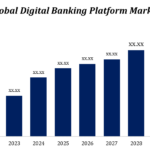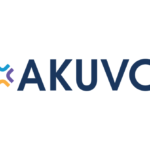How Digital Twins Could Transform Financial Risk Management
In the ever-evolving landscape of financial risk management, traditional methods are increasingly being complemented by innovative technologies. One such transformative technology is the concept of digital twins. Originally popularized in manufacturing and engineering, digital twins are now making significant inroads into the financial sector. By creating virtual replicas of physical assets, processes, or systems, digital twins offer unprecedented opportunities for understanding, predicting, and mitigating financial risks. In this blog, we’ll explore how digital twins could revolutionize financial risk management, their key applications, benefits, and potential challenges.
What is a Digital Twin?
A digital twin is a virtual model or simulation of a physical asset, system, or process. It uses real-time data to mirror the behavior and characteristics of its physical counterpart, allowing for detailed analysis and predictive modeling. In financial risk management, a digital twin represents a comprehensive and dynamic simulation of financial portfolios, assets, market conditions, or business operations.
Applications of Digital Twins in Financial Risk Management
1. Real-Time Risk Monitoring
Digital twins enable financial institutions to create real-time simulations of their portfolios and investment strategies. By continuously feeding real-time data into the digital twin, firms can monitor risk exposure, asset performance, and market fluctuations with high precision. For example, a digital twin of a financial portfolio can provide instant insights into how changes in market conditions or economic indicators affect the portfolio’s risk profile.
Benefits:
- Proactive Risk Management: Allows for early identification of potential risks and anomalies.
- Improved Decision-Making: Provides actionable insights based on real-time data.
2. Scenario Analysis and Stress Testing
Digital twins facilitate advanced scenario analysis and stress testing by simulating various hypothetical scenarios and their impact on financial assets or portfolios. Financial institutions can model the effects of extreme market conditions, economic downturns, or geopolitical events on their investments.
Benefits:
- Enhanced Risk Assessment: Helps in understanding how different scenarios could impact financial stability.
- Strategic Planning: Assists in developing robust strategies to mitigate potential risks.
3. Portfolio Optimization
Using digital twins, financial managers can simulate and optimize investment portfolios under different conditions. The digital twin can model various asset allocation strategies, investment choices, and risk factors to identify the optimal portfolio configuration.
Benefits:
- Informed Investment Decisions: Enables better portfolio management by evaluating potential outcomes.
- Increased Efficiency: Reduces the time and cost associated with manual portfolio analysis.
4. Fraud Detection and Prevention
Digital twins can be employed to simulate and analyze transactional data to detect unusual patterns and potential fraudulent activities. By creating a virtual replica of financial transactions and behaviors, institutions can identify anomalies and prevent fraud more effectively.
Benefits:
- Enhanced Security: Improves the ability to detect and respond to fraudulent activities.
- Reduced Losses: Minimizes the financial impact of fraud.
5. Regulatory Compliance
Financial institutions face rigorous regulatory requirements. Digital twins can help in compliance by simulating and monitoring adherence to regulatory standards. They can also track changes in regulations and assess their impact on financial operations.
Benefits:
- Simplified Compliance: Streamlines the process of adhering to complex regulations.
- Risk Reduction: Mitigates the risk of non-compliance and associated penalties.
Benefits of Using Digital Twins in Financial Risk Management
- Enhanced Predictive Capabilities: Digital twins provide advanced predictive analytics by simulating future scenarios and their potential impact on financial risks. This foresight enables proactive risk management and better strategic planning.
- Increased Transparency: By creating a detailed and dynamic model of financial systems, digital twins offer greater transparency into how various factors affect financial stability and risk exposure.
- Improved Accuracy: Real-time data integration and simulation allow for more accurate risk assessments and financial modeling compared to traditional methods.
- Cost Efficiency: Reduces the need for extensive manual analysis and reporting by automating risk assessment and scenario testing processes.
- Better Decision-Making: Provides a comprehensive view of potential risks and outcomes, allowing for more informed and effective decision-making.
Challenges and Considerations
- Data Quality and Integration: The effectiveness of a digital twin depends on the quality and accuracy of the data it receives. Ensuring data integrity and integrating disparate data sources can be challenging.
- Complexity and Costs: Developing and maintaining digital twins can be complex and costly. Financial institutions need to weigh the investment against the potential benefits.
- Security Concerns: Handling sensitive financial data in digital twins raises security and privacy concerns. Implementing robust security measures is essential to protect against data breaches and cyberattacks.
- Regulatory Compliance: As digital twins become more prevalent, regulatory bodies may introduce new guidelines and standards. Financial institutions must stay abreast of these changes to ensure compliance.
The Future of Digital Twins in Financial Risk Management
The use of digital twins in financial risk management is still evolving, with ongoing advancements in technology and data analytics. Future developments may include:
- Integration with AI and Machine Learning: Combining digital twins with AI and machine learning could enhance predictive analytics and automation.
- Expansion to New Areas: Digital twins could be applied to new areas such as blockchain transactions and decentralized finance (DeFi).
- Greater Accessibility: Advances in technology may make digital twins more accessible to smaller financial institutions and businesses.


































